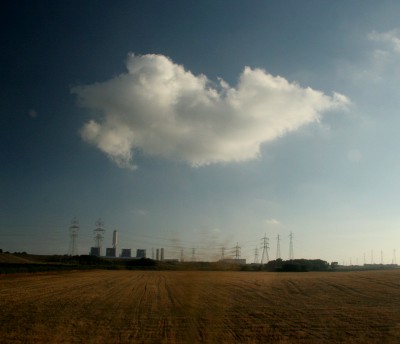We’re repeatedly advised to switch off electrical devices, like TVs and DVD players at the mains outlet rather than leaving them in standby mode, to turn to compact fluorescent bulbs and to turn them off when illumination is no longer necessary, to do our laundry at lower temperatures, to run the dishwasher only when it’s full, and to avoid using energy-hungry power showers. All those kilowatts add up to a lot of power wasted if we don’t.
According to a new study into energy use in the UK, by following this advice we might be reducing our carbon footprint a lot more than we thought. Conversely, those who don’t follow the advice might be wasting far more energy than the government thinks and so contributing more to carbon dioxide emissions and so anthropogenic global warming and climate change. Writing in the journal Energy Policy this month, Adam Hawkes, of the Grantham Institute for Climate Change at Imperial College London, has calculated that the figures used by government advisors to estimate the possible carbon dioxide reduction possible might be 60% too low.
Hawkes points out that power stations that supply electricity vary in their carbon dioxide emission rates, depending on the fuel they use: those that burn fossil fuels (coal, gas and oil) have higher emissions than those driven by nuclear power and wind. In general only the fossil fuel power stations are able to respond instantly to changes in electricity demand. He says that the government should keep track of changing carbon emission rates from power stations to ensure that policy decisions for reducing emissions are based on robust scientific evidence.
Hawkes used 60 million data points for electricity production each half-hour period by each power station in Great Britain from 2002 to 2009 and calculated the emissions for each different type of generator by examining government data showing their average annual fuel use. He then calculated emissions rates attributed to a small change in electricity demand from these two data sets.

His new study suggests that excluding power stations with low carbon emission rates, such as wind and nuclear power stations, and focusing on those that deal with fluctuating demand would give a more accurate emission figure. Hawkes’ calculations show that, 0.43 kilograms of carbon dioxide per kilowatt hour of electricity consumed is 60 percent lower than the actual rates observed between 2002 and 2009 (0.69 kilograms of carbon dioxide per kilowatt hour), meaning that policy studies are underestimating the impact of people reducing their electricity use.
“One way governments are trying to mitigate the effects of climate change is to encourage people to reduce their energy consumption and change the types of technologies they use in their homes,” Hawkes says. “However, the UK government currently informs its policy decisions based on an estimate that, according to my research, is lower than it should be.”